Hooded eyes can be a result of extra or stretched eyelid skin, drooping brows, or a combination of the two. Proper diagnosis of the various anatomic causes of hooded eyes, as well as the implications of any procedure performed around the eyes are critical.
It is crucial to determine first what is causing upper eyelid hooding. Excess skin partially covering the eyes can frequently conceal the presence of other conditions that cause droopy eyelids, such as eyelid ptosis.
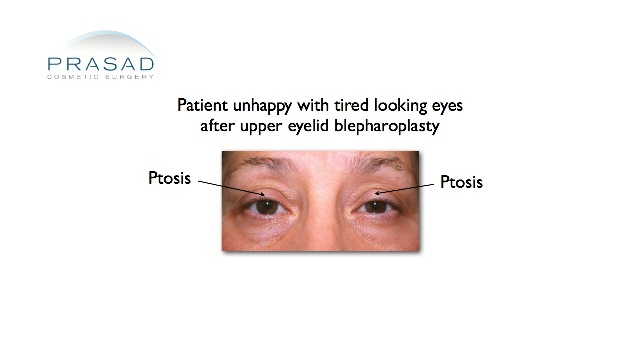
Eyelid ptosis is a condition in which the eyelid margin is lower than it would normally be for that person. Eyelid ptosis is typically caused by problems with the levator muscle, which is responsible for lifting the eyelids. Failure to recognize the presence of ptosis frequently results in dissatisfaction with the outcome of procedures that only address the eyelid skin.
Can Botox Fix Hooded Eyes?
When it comes to dealing with hooded eyelids, the brows are crucial. Many times, the patient expresses their fear of looking surprised after a brow procedure because of people they’ve seen who they claim had too much Botox or surgery. Brow enhancement allows you to shape your brows artistically rather than simply lifting them.
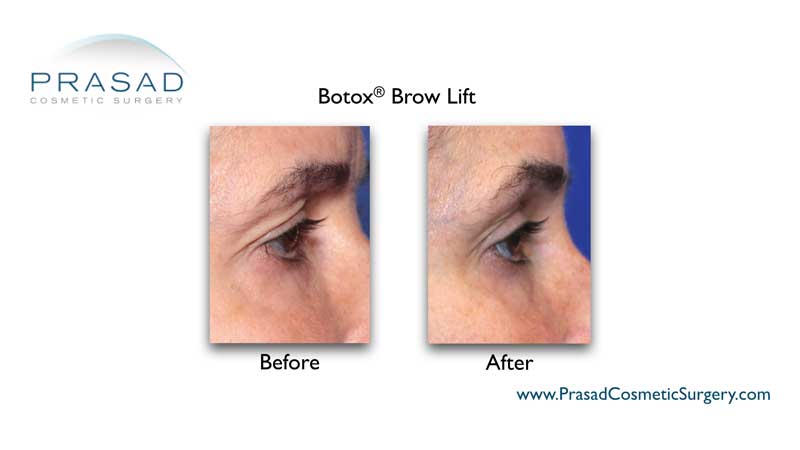
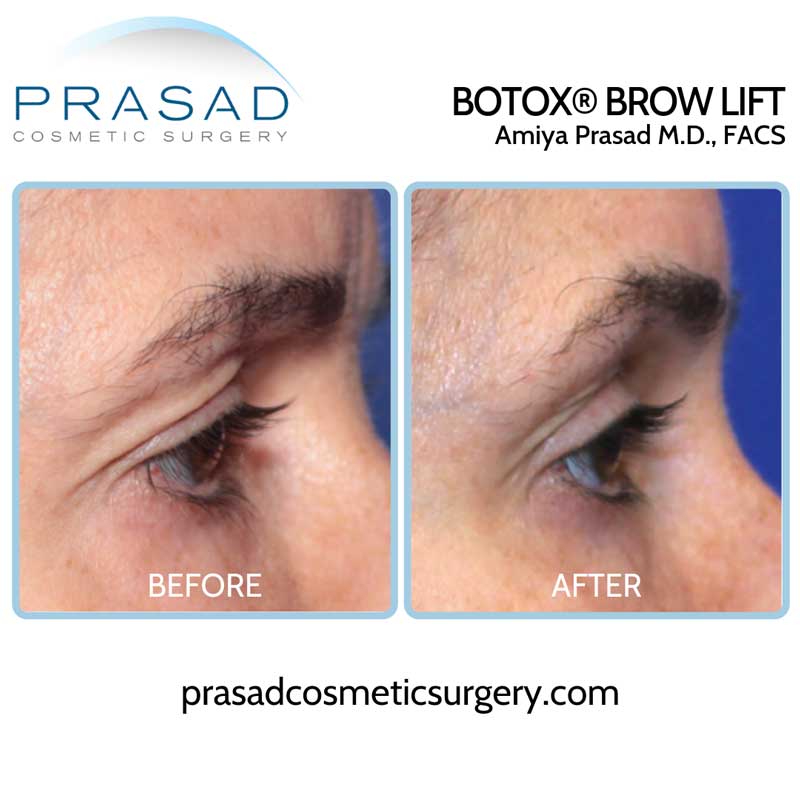
In many cases, eyelid hooding can be alleviated by addressing the brows with a procedure known as a Botox brow lift. Botox or a similar neurotoxin, such as Dysport or Xeomin, is used to accomplish this. The neurotoxin, also known as botulinum toxin, works by relaxing the brow depressor muscles, which push the brow down.
By relaxing the depressor muscle group, which includes the corrugator, procerus, and orbicularis oculi muscles, the frontalis muscle, which raises the brow, becomes unopposed, allowing the brow and upper eyelid to be lifted. As with any neurotoxin treatment, the effects can last 3 to 6 months before the procedure is repeated.
Non-Surgical Options to Improve Hooded Eyes
Another non-surgical approach to brow lifting and shaping to improve hooded eyes is the use of injectable fillers to restore volume lost due to bone loss, fat loss, and soft tissue loss. Dr. Prasad places filler in the strategic areas of the outer aspect of the brows, which helps to create a better-looking shape through volume correction.
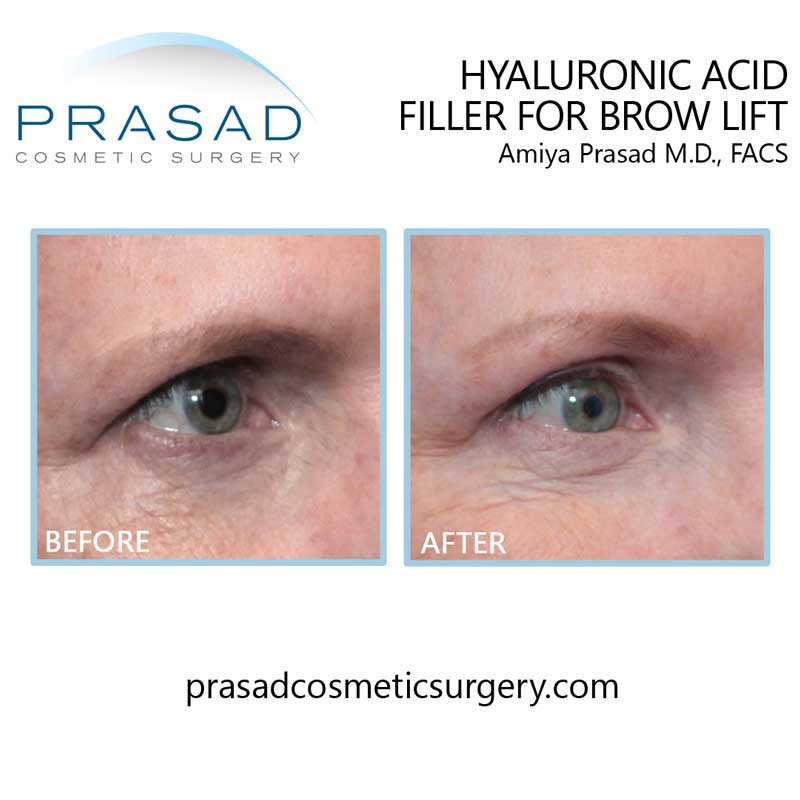
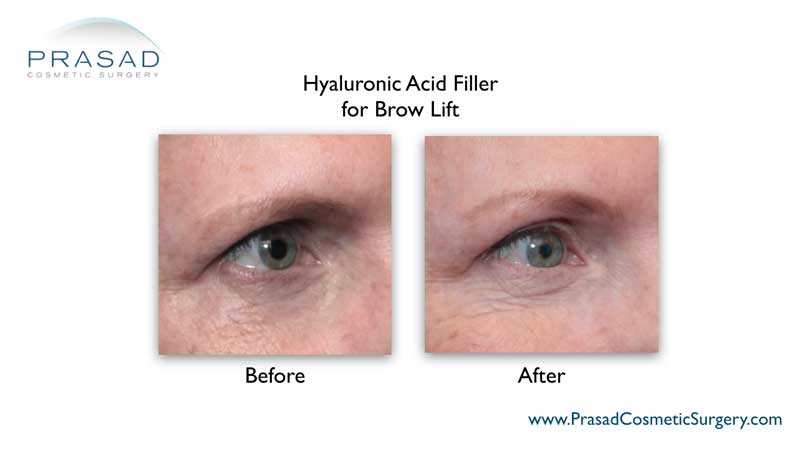
Brow Lifting Surgery
When neurotoxin or fillers are no longer enough to lift the brows, surgical options are then considered. Dr. Amiya Prasad performs all types of brow lifting surgery including coronal, endoscopic, and trichophytic browlifts. However, he prefers to perform more conservative skin-based procedures for artistic shaping rather than what was more commonly done in the past, which was more geared toward lifting.
Although the coronal brow lift has fallen out of favor among cosmetic surgeons, it can still be used in some patients. Excess fat, skin, and soft tissue are removed through a single, long incision behind the hairline, and skin and muscle are repositioned and sutured to a more optimal position to lift the entire brow and forehead, as well as the eyelids.
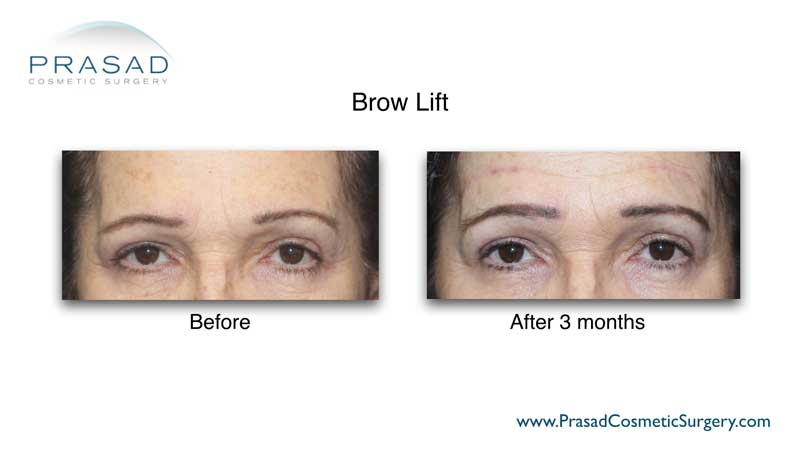
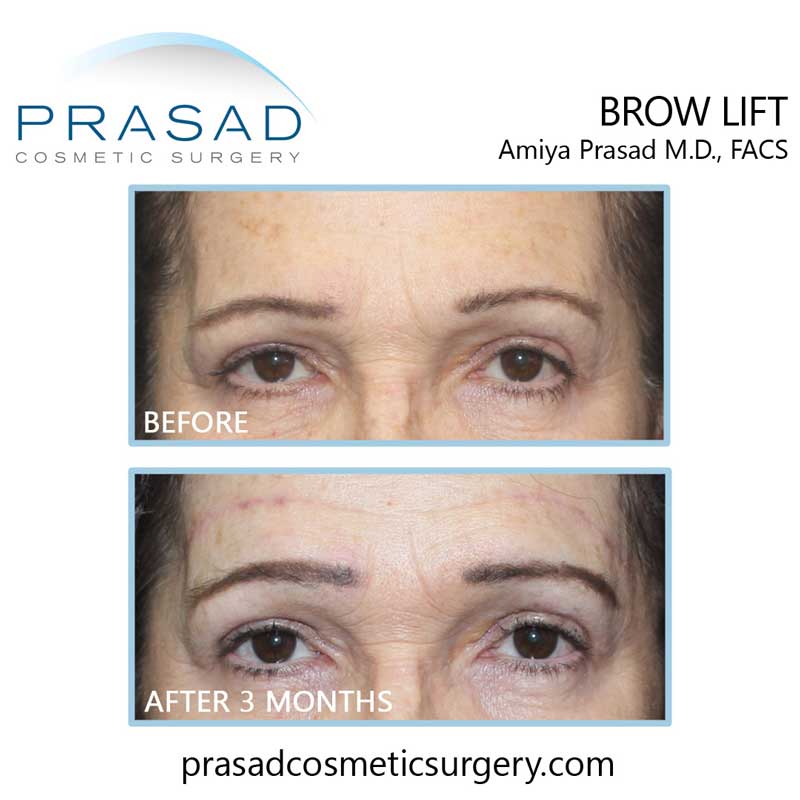
How to Fix Hooded Eyes with Surgery
When there is upper eyelid hooding, there is often excess skin and soft tissue. Cosmetic upper eyelid surgery, also known as upper blepharoplasty, is the most direct procedure to address hooded eyelids in these cases. Upper eyelid blepharoplasty is a surgical procedure in which redundant or stretched eyelid skin is carefully measured, excised, and sutured to define the upper eyelids. The goal is to reveal the true shape of the eyes rather than to remove excess skin as much as possible.
The artistry required in performing upper eyelid blepharoplasty to appear natural for the individual, whether male, female, younger, middle-aged, or older, and considering ethnic-specific characteristics, cannot be overstated. As a Board-certified cosmetic surgeon, and Fellowship-trained oculoplastic surgeon, Dr. Amiya Prasad performs both surgical brow shaping and upper lid blepharoplasty under local anesthesia with LITE™ IV sedation, avoiding the complications, and prolonged healing associated with general anesthesia. Patients who have either surgical brow shaping or upper eyelid blepharoplasty typically return to work in one week with minimal bruising, and swelling.
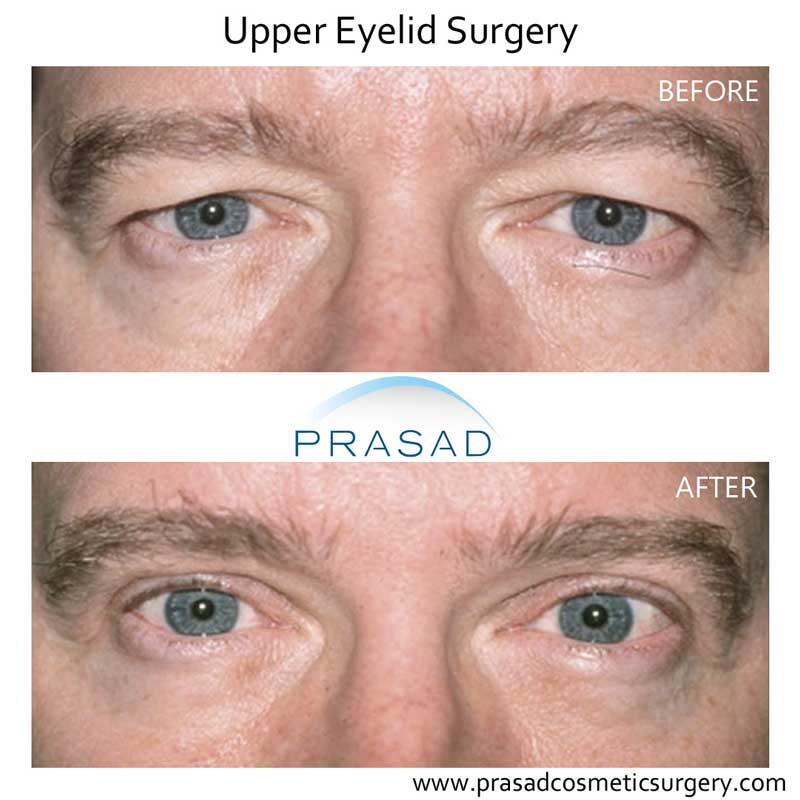
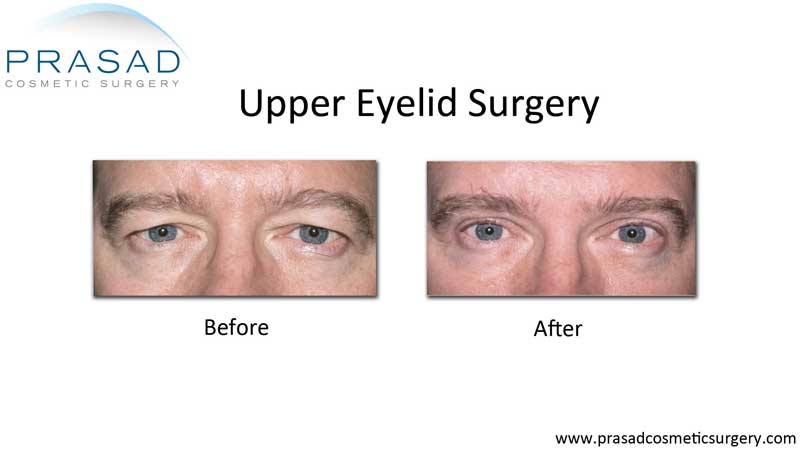
See upper eye lift surgery before and after photos
Approaching the management of upper eyelid hooding requires an accurate assessment of the extent of the hooding, the possibility of coexisting eyelid ptosis, and any concurrent brow issues. Patients at Prasad Cosmetic Surgery make educated decisions based on the specific factors that contribute to the appearance of their hooded eyes. When you understand the diagnosis, the treatment strategy, and what you should expect afterward, you are more likely to be satisfied with the outcome of any procedure.
